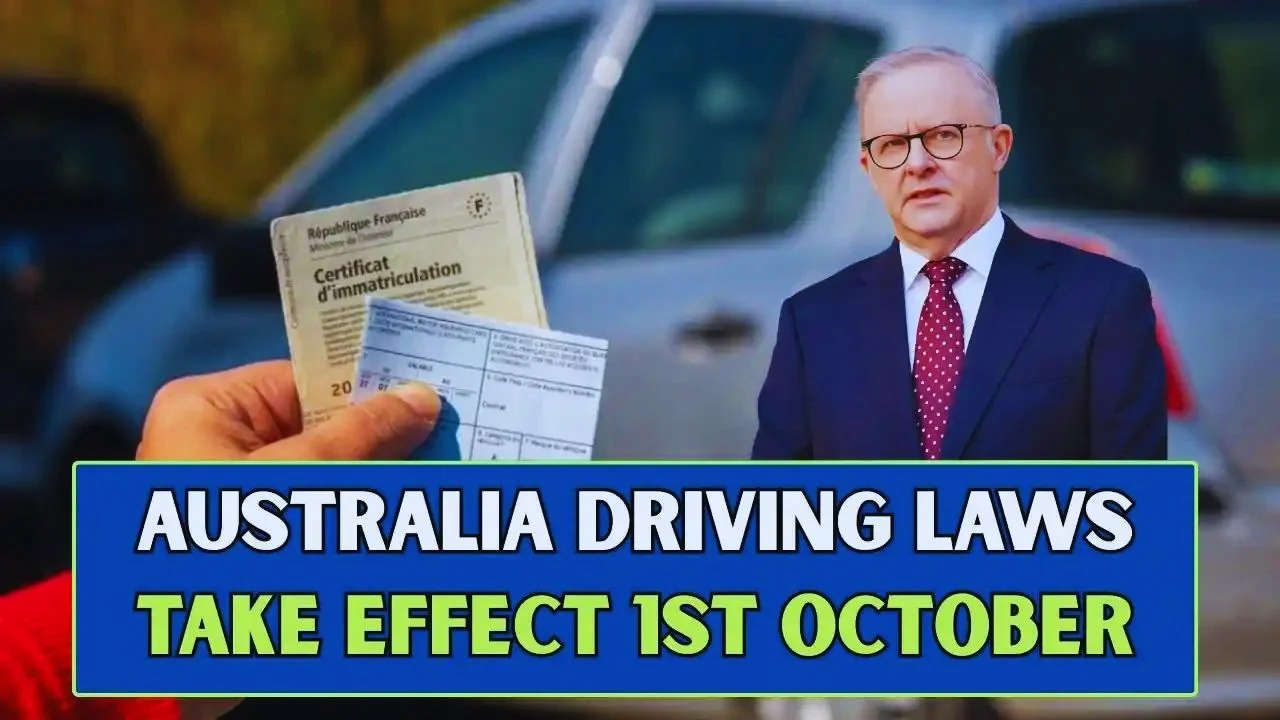The outline of the driving laws in Australia was been modified politically and state-wise in 2025 due to attempting to reducing the number of road casualties and enhance road safety for users to the fullest extent possible. Road fatality figures for the country have been the highest they have been in the last 15 years which was an alarming sign and all the state leaders have been imposing stricter rules when it comes to road safety and better enforcement along with increased safety measures.
Use of AI to enforce mobile phone use policies during driving
The use of AI technology to Center Australia has equipped smoke and drive AI poly which targets users driving with phones in hand. These road surveillance systems are able to capture the users holding phones and touch them as well.Driving without a seatbelt or using a mobile phone, even when it’s on silent, can have serious consequences. Victorians can face a fine of $1,209, and four demerit points on their license. Modern technology can detect not only mobile phone usage, but also seat belt violations and other infractions. It seems, though, the new AI technology will have all traditional patrol officers replaced.
Lowering Speed Limits in Problem Areas
Vulnerable road users are at risk and those states have implemented lower speed limits in busy walking areas. Western Australia is the most stringent in applying lower speeds, reducing the limit on over a hundred roads from 50 and 60 kph to 40 kph in inner areas with lots of pedestrian activity. Queensland, too, has reductions in certain busy towns such as Hervey Bay whre speeds have been lowered from 50 kph to 40 kph.These reductions are consistent within the global narrative which regards lower speeds as a way to increase survival rates in pedestrian and vehicle collisions. Such adjustments are meant for areas with a significant number of boarders passing on foot, school zone locations, and business areas during rush hours.
Tightened Restrictions on Young and Older Drivers
2025 reforms will introduce the requirements for tail end emerging and young and older drivers. All provisional P1 drivers across the country cannot anymore operate a motor vehicle between the hours of 11 PM to 5 AM without permission for work and school. Additionally, now both P1 and P2 drivers have a limitation of carrying one passenger aged between 16 to 21 years in the vehicle without a licensed adult.Drivers 60 years and older must now complete a medical and a vision test every three years until 70. This is in addition to the tests already being done every three years. For persons of 70 and older, in addition to the tests every 3 years, complete a medical every 5 years. Other than keeping the rights of every individual, these rules ensure drivers are in a position to comprehend all of the necessary components of safe driving.
Australia’s 2025 Driving Law Changes – Summary Table
Major Law Changes by Category
| Category | Change Details | States/Territories | Penalties | Effective Date |
|---|---|---|---|---|
| Mobile Phone Use | AI-powered cameras detect phone use, touching, or holding | Nationwide | Up to $1,209 + 4 demerit points | July 1, 2025 |
| Seatbelt Detection | AI cameras detect unbelted drivers and passengers | Nationwide | Varies by state | July 1, 2025 |
| Roadside Safety – Victoria | Slow to 40km/h when passing emergency/assistance vehicles | Victoria | Up to $961 fine | July 1, 2025 |
| Roadside Safety – SA | Slow to 25km/h when passing stationary vehicles (multilane roads) | South Australia | Up to $1,895 + 9 demerit points | May 19, 2025 |
| Speed Limits – Pedestrian Areas | Reduced to 40km/h in high pedestrian areas | WA, QLD (selected areas) | Standard speeding penalties | July 1, 2025 |
| P1 Driver Curfew | No driving 11pm-5am (work/education exceptions) | Nationwide | License suspension possible | August 1, 2025 |
| P1/P2 Passengers | Only 1 passenger aged 16-21 (unless licensed adult present) | Nationwide | Fines vary by state | August 1, 2025 |
| P-Plate Mobile Phones | No mobile device use (including mounted) | Nationwide | Standard mobile phone penalties | August 1, 2025 |
| Learner Driver Hours | Increased from 120 to 150 supervised hours | Nationwide | N/A (licensing requirement) | August 1, 2025 |
| Senior Driver Testing | Medical/vision tests every 3 years (ages 60-70) | Nationwide | License suspension if failed | August 1, 2025 |
Financial Costs and Implementation.
Most, if not all, the states have obliterated the previously set limits to how much a traffic offense can cost. In New South Wales (NSW), all penalties, fees, and charges have increased by 3.2% due to the Consumer Price Index. Queensland has also lifted the suspension on registration fines. Speeding fines, mobile phone use fines, and seatbelt fines all now have an additional 3.4% increase to vehicle registration fines.To balance the recent legislative decisions, these also set in effort road safety. More than revenue creation, these decisions set serious focus on preventing common road atrocious decisions. Going along with the additional charging, the technology that is used in monitoring these devices. This indicates the local authorities “have sharp claws”. T
The Future: Road Safety as a National Focus
The changes to driving laws in Australia by the year 2025 show how much Australia balances personal freedoms with the safety of the population in terms of road safety. The arguments around some policies, especially those relating to senior drivers and younger motorists, are the most publicized, but the changes are based on evidence that proves that the right actions can be taken to seriously lower road trauma.Fulfilling these laws, Australia remains focused on road safety, while the drivers are required to understand changes relevant to their jurisdictions.



